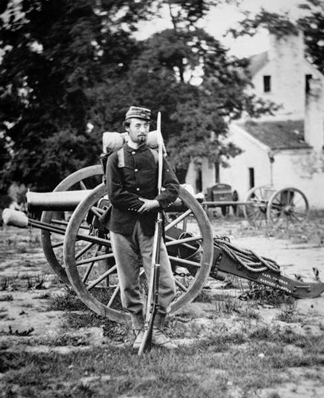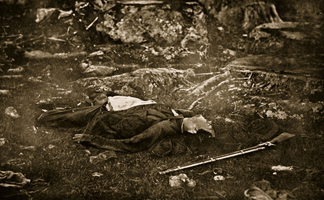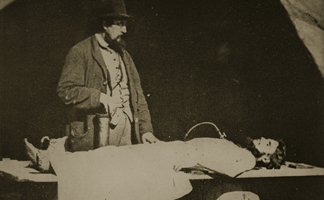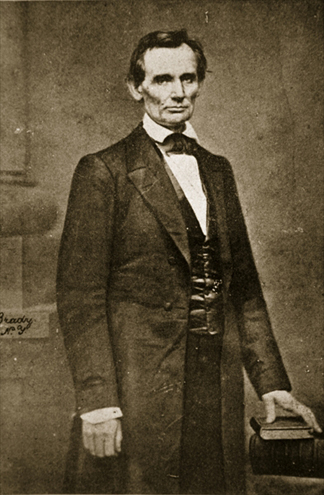Published 20/10/2010
| "I had to go, a spirit in my feet said 'go' and I went." Mathew Brady Mathew Brady is considered by many to be the father of photojournalism. During the Civil War he converted his fashionable portrait studio into a full time operation of documenting the war, setting a precedent that would be later imitated. Brady was a sought after photographer before the war, but there was a dramatic increase in demand for his services by soldiers wanting to be photographed in their uniforms before going to the front-line. After travelling to the front to witness the first major battle of the war, the Battle of Bull Run, Brady quickly assembled a team of 23 photographers and sent them around the country to document numerous battles. Before Brady's Battle of Bull Run images, war photography had consisted of camp life, military demonstrations and soldier portraits. Never had anyone put themselves at risk attempting to capture live conflict. In September 1862, Brady exhibited pictures of dead soldiers in his New York studio, enticing a shocked and curious public to inspect his work, particularly images of the Battle of Antietam, the deadliest day in the entire war. Brady and his team were the first to show the death and suffering of the war, with the New York Times stating that Brady brought 'home to us the terrible reality and earnestness of war.' Click here for over 200 images produced by Brady and his studio, all of which are available for licensing. |
|
|
"Brady and the Cooper Union speech made me President." Abraham Lincoln It is widely documented that Brady was a supporter of the Republican Party and made no less than 35 portraits of Abraham Lincoln during his 1860 presidential campaign. The portrait (right) was taken shortly after his Cooper Union speech and proved that the obscure candidate was dignified despite his tall, gangly figure. After his electoral victory, Lincoln gave his glowing praise to Brady and through this endorsement, Brady was able to gain unrestricted access to the front-line conflicts of the entire war. Brady is also attributed to the portrait of Lincoln that was used in the design of the first American $5 bill. There are thousands of images of the Civil War in the Bridgeman archive, including paintings, drawings, portraits, photographs, flags, uniforms and objects. Here are a few collections that are particularly strong in Civil War material. |
|






